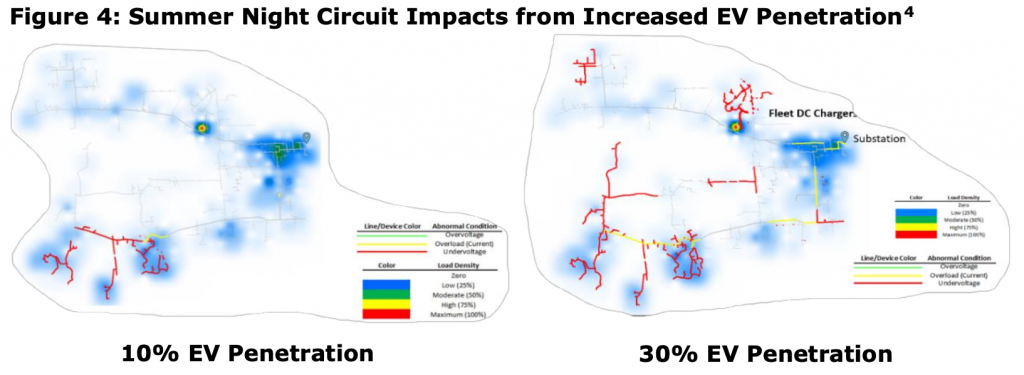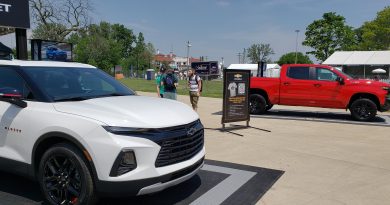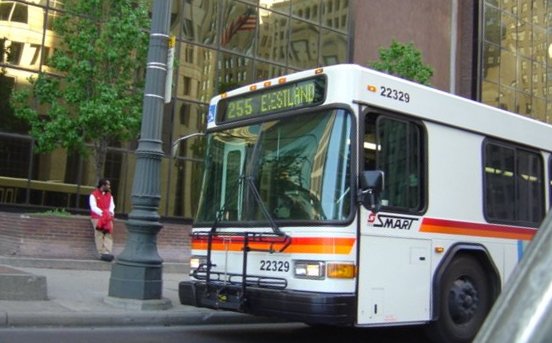EV Charging Infrastructure: From Demand To Reality
One of our readers asked us to write a piece about how electric vehicle chargers even get installed at scale. Are utilities responsible for adding new capacity? Does the whole electric grid have to be revamped?! It’s a good question, especially as electric vehicle sales have gone from virtually none in 2011 to several hundred thousand per year in less than a decade– in the US alone. There are usually things like incentive programs that come through city, state, and federal programs— consumer rebates and what have you. In the words of our editor: “Yeah, anyway! How do they cram all of that graham?” In short: There’s no one answer. But there are a few competing answers!
First, it’s within the rights of consumers in most areas to install EV chargers themselves. Many level 2 chargers can be installed in most homes without upgrading your electric service– unless, say, your panel is already maxed out. DIY mindset? You might be able to get away with it for under a grand. (This probably won’t fly for most rebate programs but it’s doable!). Otherwise? Probably about three grand, all-in.
Thus we come to a much harder question.

“Can’t the public utility just do it?”
Well, the short answer is yes. But it’s unfortunately more complicated than that. A representative of the Michigan Public Service Commission recently told us: ” The utility companies do have an interest in selling more power, [but] […] If the utility company were to finance the infrastructure, that would come on the backs of all their utility customers.” In other words, utilities don’t really do stuff unless they’re required to do it by law. This has been a sticking point around the EV implementation. It’s not a big problem when done incrementally. But DTE Energy’s own estimates say that it can’t support more than the electrification of 20% of the cars in its service territory. This is a big problem if General Motors is going to go all-electric in the next ten or fifteen years.
It’s a bigger problem with huge installations– electrifying entire fleets- than with one-off consumer installations.
How to think market-wide
One thing utilities can do to incentivize consumers to develop their own EV charging infrastructure involves how they price electricity. The utility can essentially use electric cars as a battery for the grid, buying power from them when they need to and then letting them charge when rates are lower. The technology to do this isn’t new, nor is the idea of time-of-use pricing. Time-of-use was developed mostly to reduce peak electrical demand when it would strain the grid. This is usually midafternoon to evening in the warmest months, when air conditioning use is high.
Imagine doing a load of laundry between 3-7pm would cost you $4.00, but if you did it at 11pm, it would only cost you 50 cents. An electric dryer uses maybe 4kWh during a load. An electric car, in contrast, has a battery capacity of 50-100kWh. Now, imagine a hundred electric vehicles that could provide 100kWh each to the grid. That’s ten megawatts– not small potatoes.
You see where we’re going?
Challenges to broad rollout
There are some concerns about how to make this happen. First, it requires fairly sophisticated software that’s good at talking to other fairly sophisticated software– and to hardware. The idea of comparing “networked” versus “non-networked” chargers makes it hard to consider how every car could be part of this system. Un-networked cars necessarily can’t be part of the two-way power system. Second, it requires utilities to adopt progressive pricing policy that can actually make this happen. In Michigan, DTE spent millions of dollars to lobby against net metering policy that would have allowed solar power generators (like on your own rooftop) to sell power back to the grid at the full price. Now it is sold back at a wholesale rate.
This is a disincentive for solar adoption.
So, you have your Tesla Powerwall at home, maybe. This can now sell power back to the grid, but it can also power your house in the event of an outage. What if we wanted to scale this starting small? What if every block had, say, a solar panel and battery pack “farm” to power its own local grid infrastructure? Now we’re talking. In Germany, utility experts estimated that the ratio of EVs to chargers would have to be about 16-to-1 to make a nationwide charging network viable.
It can be done! But without a large number of networked chargers, a lot of cars will still use a lot of power.
First Movers, Slowpokes, and Fossil Fuel Grids
Electrification isn’t exactly a one-size-fits-all solution. Every power grid has different struggles and different needs, and every market is different for cars, too. Akio Toyoda himself, grandson of the founder of Toyota Motors, was particularly bearish on the idea of electrifying the domestic Japanese market. This was particularly ironic because Toyota pioneered the era of the hybrid beginning in the late 1990’s– well before the fuel spike of the 2000’s, which made its iconic second-gen Prius a super hot commodity. Wrote Jay Traugott in CarBuzz:
Toyoda further explained to his audience that Japan would deplete its supply of electricity in the summer if all cars were running on electric power. The required infrastructure to support 100 percent EVs would cost the island nation between $135 billion and $358 billion, Toyoda estimated.
Toyoda’s major beef with the idea of disrupting the automotive industry with EV’s is that the renewable grid simply isn’t there quite yet to support it. Most of Japan’s electricity is generated by fossil fuels like coal and natural gas, thus eliminating the entire concept of ‘zero-emissions vehicles.’
Electric vehicles or gas vehicles, we’re still extracting stuff out of the ground and burning it in some way. The main question is where is it being burned and therefore exhaust generated? Is it at large scale power plants where it becomes Somebody Else’s Problem (often lower income), or at the point-of-use via a car’s engine? There is some economy of scale from the efficiency of a large-scale turbine versus the relative inefficiency of a car. But there are also huge transmission losses from moving electricity over a large distance.
Different Adoption Rates Across Countries
Contrast with Germany, where, according to one German mobility expert we spoke with, automakers were dragging their feet on the issue of EV adoption. “It’s sort of like, ‘Well, we have just always done things this way, but I guess we can try out making a new electric vehicle, or whatever,” he told us. “I don’t really think they’re taking it seriously quite yet.”
This isn’t to say that Germany isn’t leading on the whole in the sustainability scene. Consider that twice as many Germans live in close proximity to a transit stop as Americans. This explains a large portion of why transit ridership in that country is so high. Energy generation in Germany is also radically more sustainable than in Japan and the United States. As Japan works to decarbonize its economy, it remains heavily dependent upon fossil fuels. The Fukushima Daichi disaster marked a precipitous collapse in the country’s reliance on nuclear power. This also coincided with widespread growth of natural gas as a fuel source. Germany, in contrast, derives about half of its power from renewables.
Ironically, Germany still has more EV chargers than the entirety of the United States (which has about four times the population!). Japan lags behind both countries– with about 25% as many chargers as Germany. But both countries also have high-speed rail– which the United States doesn’t really have. (One day!).
What does this mean for me?
If you’re interested in getting an electric vehicle, make sure to do your research. Your local grid can handle you getting a charger. Can your house handle it? Probably– but it’s something you’ll want to check first to make sure. Beyond that, look into rebates and tax incentives! These can often be combined, sometimes with renewable energy incentives (like for rooftop solar).
This is part of a series on Mobility, covering EV charging infrastructure, fixed-route, emergent mobility solutions, and more.
Please consider supporting our advocacy, research, and analysis!





